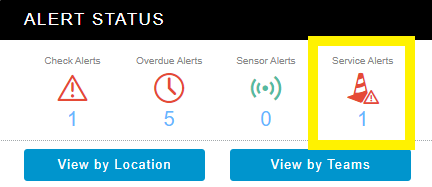Service Alerts
Why Are Service Alerts Triggered?
A service alert is triggered if:
If a sensor cannot send data to the cloud, data will be stored on the sensor. When connectivity is restored, the backlog of data will be sent from the sensor to the Control Centre. Cold Sensors and Hot Sensors can store data for up to 5 days. Sensor+ devices can store data for up to 3.5 days. After this point, data will be overwritten. We strongly recommend that you respond to service alerts as soon as possible to avoid data loss.
Who Receives Service Alerts?
See View, Acknowledge, & Clear Alerts for instructions on how to manage alerts.
What Information Is Displayed in a Service Alert?
How to Resolve a Service Alert
After you resolve the issue, it may take up to 15 minutes for the device to send data to the Control Centre and the alert status to update to stopped alerting.
If you receive frequent service alerts indicating that a device is often offline, please contact us.
Cause | Description | How to Resolve the Issue |
|---|---|---|
Sensor Offline | The sensor is not sending data to the hub.
| |
Hub Offline | The hub is not sending data to the Cloud.
| See Hub Troubleshooting. |
Repeater Offline | The repeater is not sending data to the hub.
| |
Low Battery | Sensor battery low If the device is a:
Repeater battery low
|


